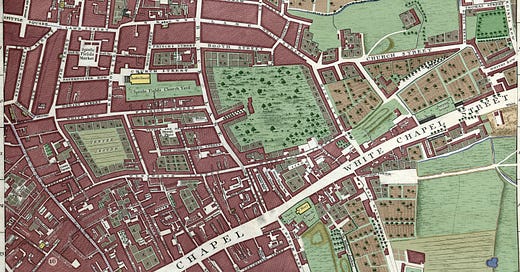London's East End in Colour, 1746
A Georgian map of Whitechapel, Shoreditch and Spitalfields, coloured for the first time.
Welcome to Londonist: Time Machine, the newsletter of London history.
Today, we’re back with the maps of John Rocque, and my ongoing project to colour in all 24 panels from his 1746 masterwork. This time, we’re in a part of town that most Londoners (and visitors) will be familiar with: the near East End. To get your bearings, Whitechapel Road is the diag…




